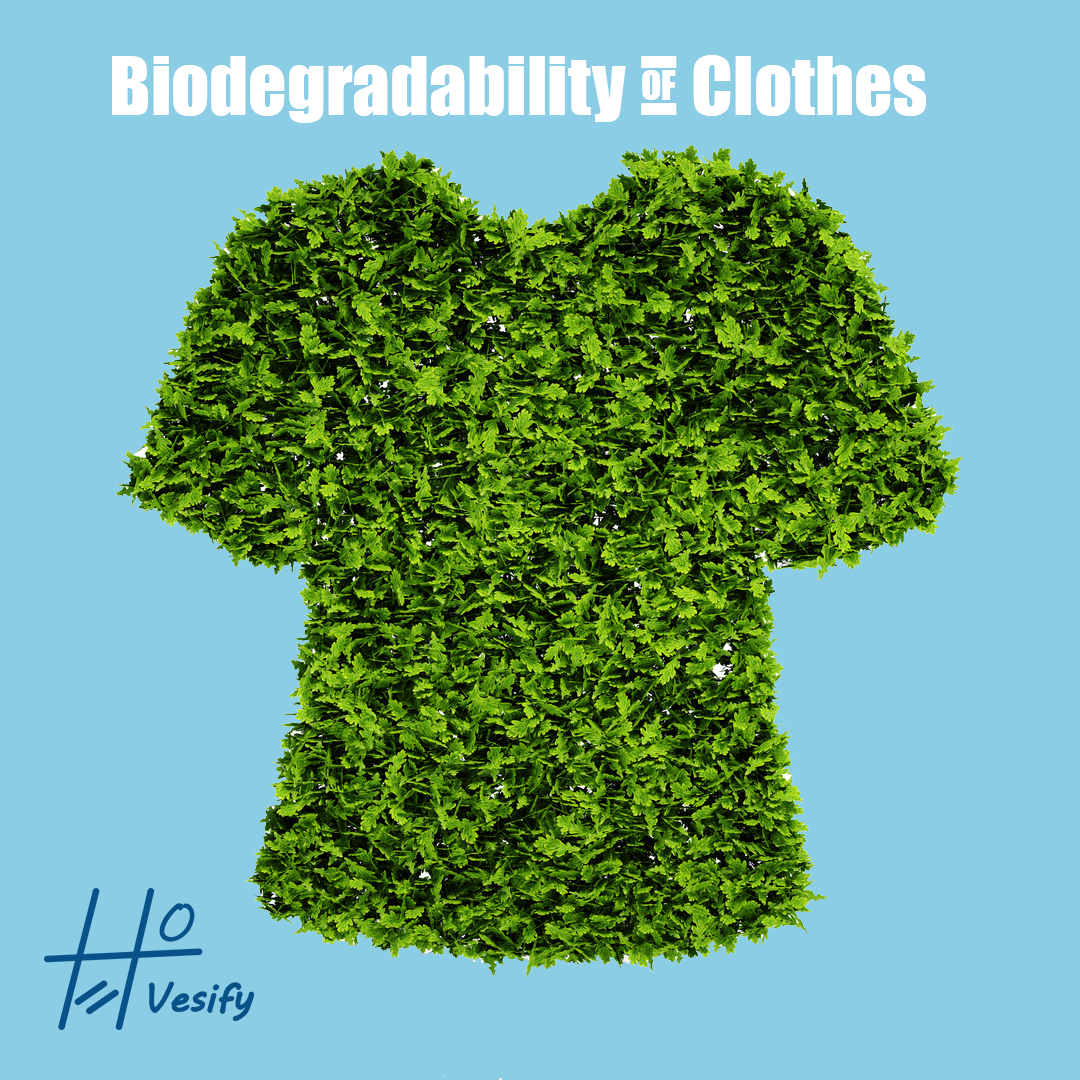
Biodegradable Clothes
I hear this all the time that natural clothing is better or more sustainable because of biodegrades clothes. Now biodegradability is of course a great thing but this isn’t exactly true. This idea is perpetuating a false myth and is a lot more complicated than simply natural equals biodegradable. The vast majority of clothing including those made from natural fibers should not be composted and don’t properly biodegrade. But before getting into that we need to understand what biodegrading means. Because technically everything breaks down over time.
Definition of biodegradable clothes
- Capable of being broken down into innocuous products by the action of living things (such as microorganisms)
Or
- To decay naturally and in a way that is not harmful.
Innocuous and not harmful are a key part of this. Just because something appears to break down and disappear into the environment doesn’t mean that is not causing harm or biodegrading safely. And with clothing we have to remember that it`s so much more than just the fiber content written on the tag, by the way we recommend you always check clothing tags. So, while a cotton garment should in theory be biodegradable, it very often isn’t.
Here`s where some of the issues come from: Spandex and elastane. These are synthetic and blended with the fibers so they can’t easily be separated. Anything that has conventional spandex and elastane in it, it can not be composted. And this also goes for any type of fabric that`s blended with synthetics. They don’t properly biodegrade.
Threads and biodegradability
Then there is a thread so you would think that if a garment says 100 percent cotton it`s also sewn with cotton thread. Unfortunately, though the vast majority of clothes are actually sewn with polyester thread. It`s a lot more durable and less prone to breaking in sewing machines. So, cotton thread is rarely used. Typically, only companies who are making a strongly concerted effort to avoid synthetic materials will use cotton thread, manufacture biodegradable clothes, and sometimes cotton thread might not even be pure cotton. It can be a blend or sometimes cotton wrapped around a polyester core. So, while the fabric might biodegrade, a garment could still be putting a bunch of plastic thread into the environment.
Cloth dying and biodegradability
Then there are the dyes, this is a big one because almost all clothing has dyed. The majority use synthetic dyes. And dyes have been found to contain things like heavy metals and we know that azo dyes for example bioaccumulate and can harmful to creatures and the environment. With some of the other dues, there unfortunately very little research on how they actually biodegrade. So, we can really only trust dyes that have been tested and certified. But as customers, we get almost no information about what our clothes have been dyed with. It`s not at all safe to assume that the dyes can be composted and safely biodegrade. You can do something though is to look for certifications like ecotex or GOT certification also as a component on toxicity and biodegradability. The GOT certification can be tricky because it can be applied to different stages of the supply chain so a brand could use GOT certified cotton but that doesn’t necessarily mean the dyeing process was GOT certified or that the final garment is GOT certified. Ideally, you want pieces where the whole brand process has been GOT certified.
Prints and Finishes are biodegradable?
Many garments have graphics, printed labels, or some type of treatment on the fabric, and these are almost always some types of plastic or synthetic. And some especially when it comes to fire stain and wrinkle treatment have been found to contain environmentally harmful chemicals. The frustrating thing is that brands don’t have to disclose and honestly might not even know themselves what their garments have been printed or treated with. And it makes it difficult to find biodegradable clothes.
Cellulose synthetics
What about things like viscous, rayon modal, and tensile. These fibers do biodegrade as in breakdown in the soil but we also run into the issue of what have they been dyed with. And we know for example that viscose production uses a lot of toxic chemicals. This seems to only be an issue with the production, but there is no information about if there is a negative impact on the soil when viscous biodegrades. And that`s a big issue, it`s not just about the garment disappearing but making sure that it`s not harming the soil and environment and we have the real biodegradable clothes.
We can’t see things like the microplastics and toxins that might be coming from a biodegrading garment.
What we can do?
Although recycling, upcycling, and reusing the clothes is a promising solution, you can also compost your clothes. But please be very cautious with composting clothing. If you have any doubts, don’t put it in the compost. Unfortunately for 99 percent of clothes, we just don’t know what`s in them, however, there are some brands making fully natural and biodegradable clothing, ensuring things like the elastics, dyes, and thread are safe. Recycling, upcycling, and reusing clothes is another promising solution.
